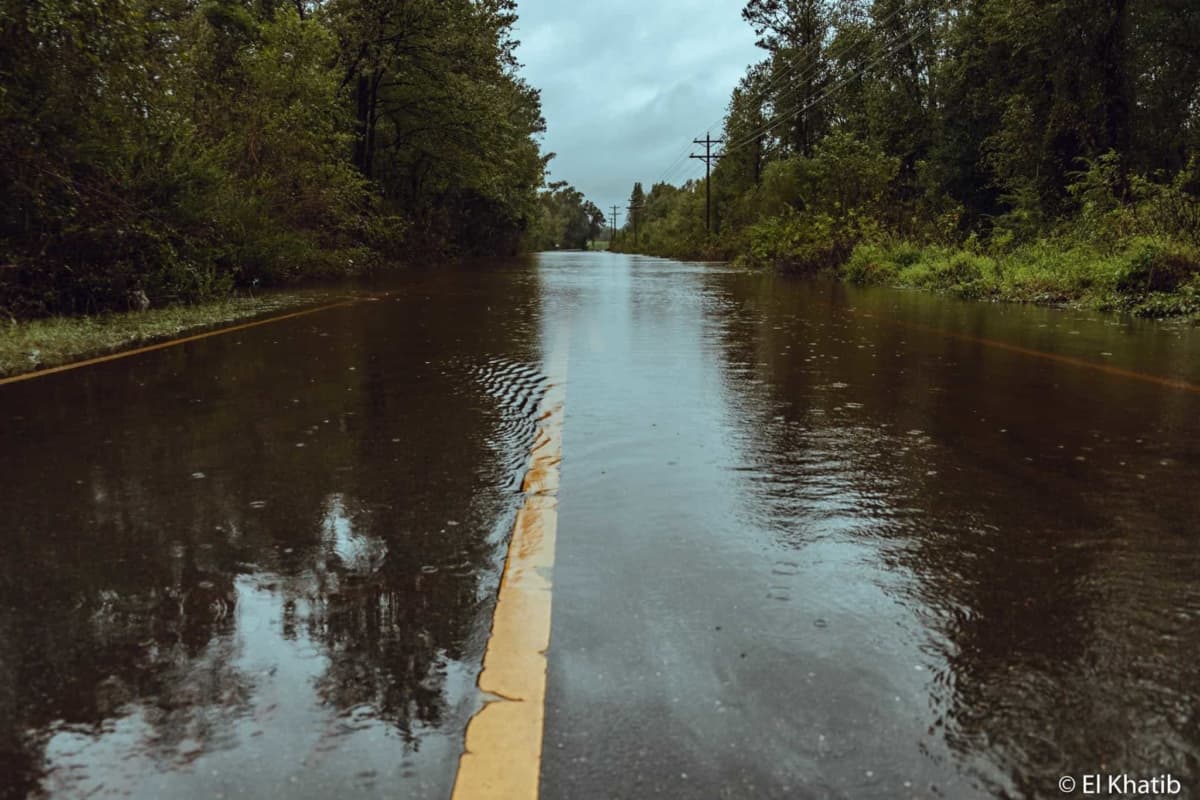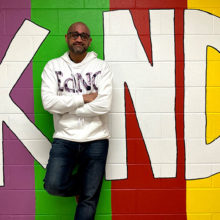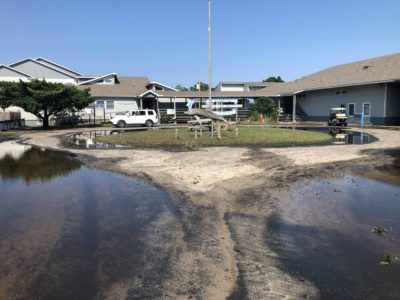A year has passed since Hurricane Florence wrecked communities, flooded homes and businesses, and interrupted thousands of lives in North Carolina. The waters have subsided, and debris has been cleared. A drive on most of the region’s main streets reveals little of the impact Florence made.
But the reminders are scattered about, seeded deeply alongside memories of Hurricane Matthew. And Hurricane Michael. And Hurricane Dorian.
You see reminders in homes still sporting blue tarps on their roofs. You see them in campers parked in driveways, where families live because their homes are still uninhabitable. You see them in the survivors who are still trying to get back to normal while dreading when the next hurricane will tear through their lives.
And you see them in the children — some who get nervous when it rains; others who can’t sleep unless they know there is a bag packed, in case they have to flee again in the middle of the night.
The fear and sadness spills in tears from survivors’ eyes when they recall what happened. And what may lie ahead.
“I still can’t talk about it without — I’m crying now,” Christy Strickland said earlier this year as she thought back on the flooding that ravaged her home and closed her children’s school in Pender County for 30 days. “You wake up some days, and, I mean, every day you’re glad that you’re here and that you made it through, and it could have been worse. But you wake up some days, and it’s just hard.”
At the center of the storms are our school systems — whose dedicated employees act as crucial communicators before and after hurricanes hit, whose buildings serve as shelters for communities, whose buses shuttle residents to safety, and whose students experience the trauma of what they saw, and the fear of repeated displacement, chaos and homelessness.
The educators remember, too. And the lessons they’ve learned from Florence offer a chance to better prepare for the coming storm.
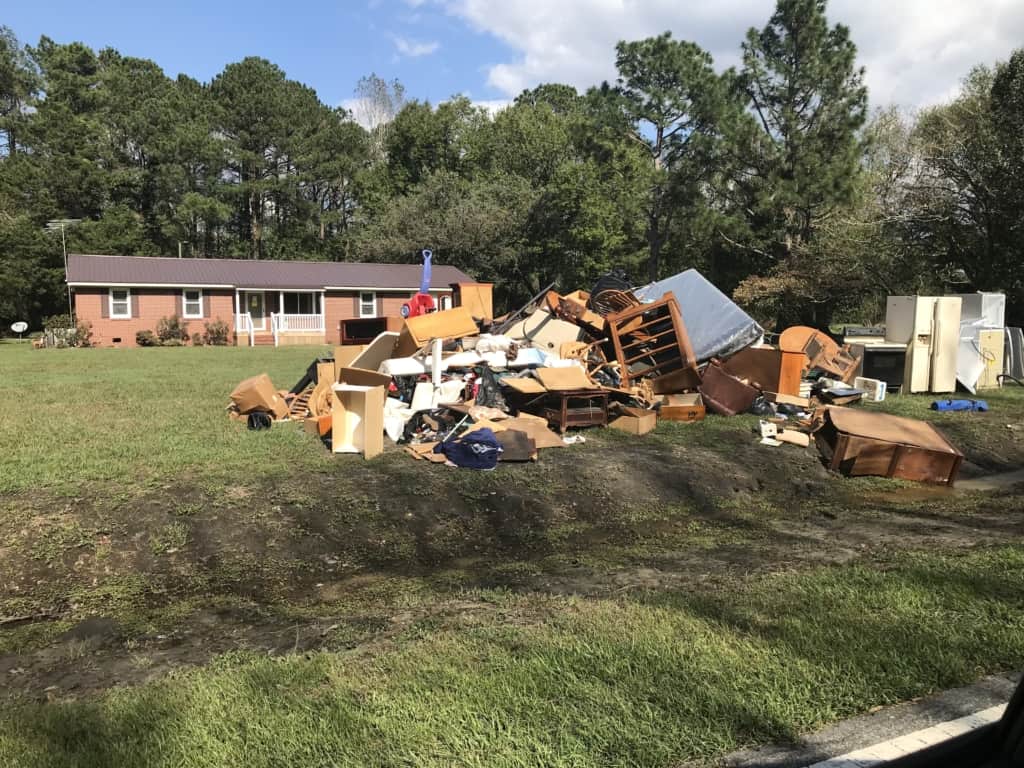

A public service
Schools are the centers of communities. They are among the largest organizations in each county and a mandatory destination for children. And, as we saw in the wake of Florence, and recently with the threat of Dorian, they are an integral part of disaster preparation and recovery.
“The school serves,” West Craven High School Principal Tabari Wallace said. “And a lot of people don’t know this. We’re so unappreciated right now, and we take so many hits from society, but the school is usually a hub where everything comes together. That’s what makes schools so important. It’s really a hub of humanity.
“We’re the ones that open the shelters to bring people in because we have the space. We’re the ones, the principals, that are out under curfew trying to go assess buildings and making sure everybody’s taken care of. We’re your avenue to society, period. This is where you’re going to get the accurate information.”
As students returned after Florence, schools focused on identifying what those students needed. Teachers asked them about their homes and their families. They checked in on their mental health but also on what their families needed, physically.
Partnering with organizations, such as Communities in Schools in Robeson County, schools sent home surveys asking parents and guardians about the type of support they needed, and then they used relationships with county government, emergency management, and volunteer organizations to help fill those needs.
“The school system is the largest organization in Pender County,” Superintendent Steven Hill said. “It’s the heartbeat of Pender County. When it’s open, everything functions around the schedule of the school. We’re here in emergencies, we’re here in entertainment, we’re here in athletics, we’re here in education — this is the heartbeat of this county.”
At some schools, nutrition staff worked quickly to make sure food that would not be served to students (as schools were closed for weeks) was distributed into the communities. Schools in Carteret County, for example, fed their community for more than a week. And at many other schools, community pantries popped up when churches, nonprofits and the state sent massive amounts of food and supplies.
“You could go in and get whatever you needed,” said Strickland, who visited one of these efforts at Arapahoe Charter School. “They kept that opened for months.”
“The schools help so much in these times,” retired teacher Jennie Kennel Adams said. “It’s like an extension of our family.”
After Florence, many schools figured out ways to serve even more effectively — learning how to better track students, prepare and run shelters, and communicate with their school families.
“As it happens more and more, we just get more and more used to it, and we can improve our response,” Wallace said. “We’re learning. We’re getting better.”
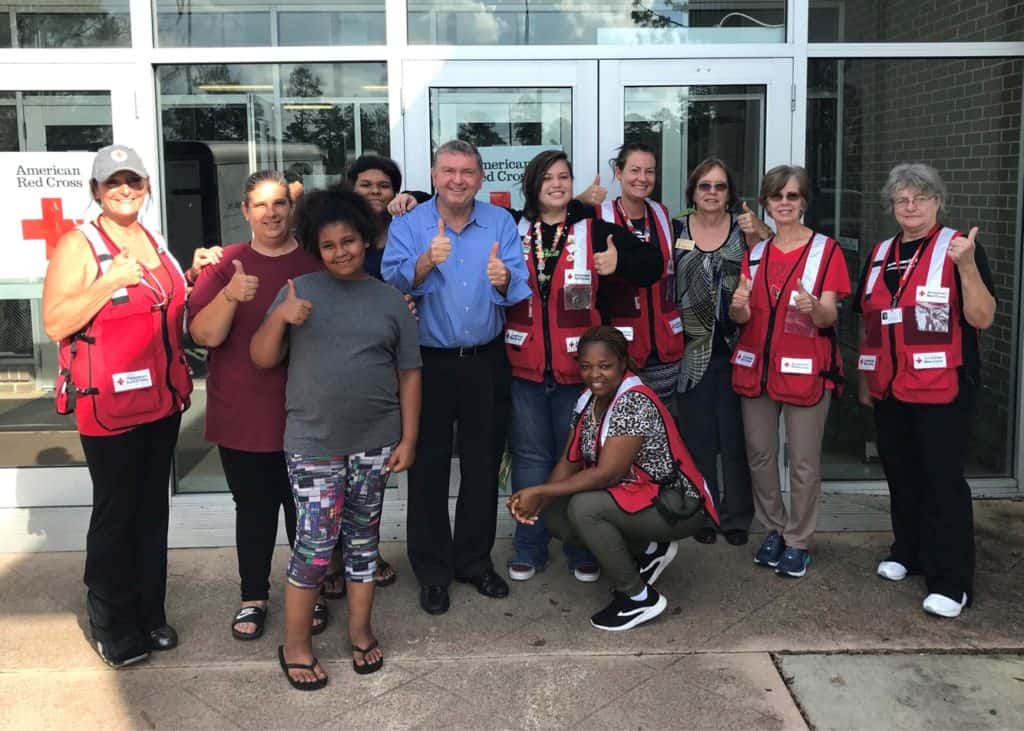

Student volunteerism
The school systems aren’t the only ones stepping up in times of disaster. The students do, too.
Jamie Troche remembers how grateful she felt to find only minor damage to her home when she returned after evacuating ahead of Florence.
“The next morning, we had internet and power,” said Troche, a math teacher at Wilmington Early College High School, “and my son was all excited to play Fortnite.”
The story is a reminder of how quickly children can bounce back. And, by contrast, how deeply affected they are when things don’t go as smoothly.
For Troche, the latter was a lesson she wanted to pass onto her son, stopping him before he could even reach his gaming controller. “Nope,” she said. “Get some dirty clothes on, and we’re going to go digging and help out in the community.”
Up and down North Carolina’s coast, students turned out in droves to lend a hand. Organized by parents, churches or volunteer groups, they used their time off while schools rebuilt to help their neighbors rebuild, as well.
In Craven County, math teacher Billy Dudding gathered about 20 of his West Craven High students after Florence passed through. They went door-to-door looking for people to help. They mucked and gutted homes, cleaned debris — and spread hope, Dudding said.
“When you see your kids standing there hugging and talking to a 64-year-old woman, and she’s crying because she’s so grateful,” he said, “it’s powerful. And you can see it in their eyes. It’s made an impact on them.”
A year later, Dudding is working to expand his 20-student volunteer crew. In the weeks leading up to this hurricane season, he began a #helpyourneighbor challenge. Students are asked to find and help a neighbor after a catastrophic event, post a picture with the hashtag, and get a community service sheet signed. Students get credit for community service hours, but Dudding says they will get more than that.
“They learn humility, and the power of [service],” he said. “We’re encouraging our students to join hands and be there for their community.”
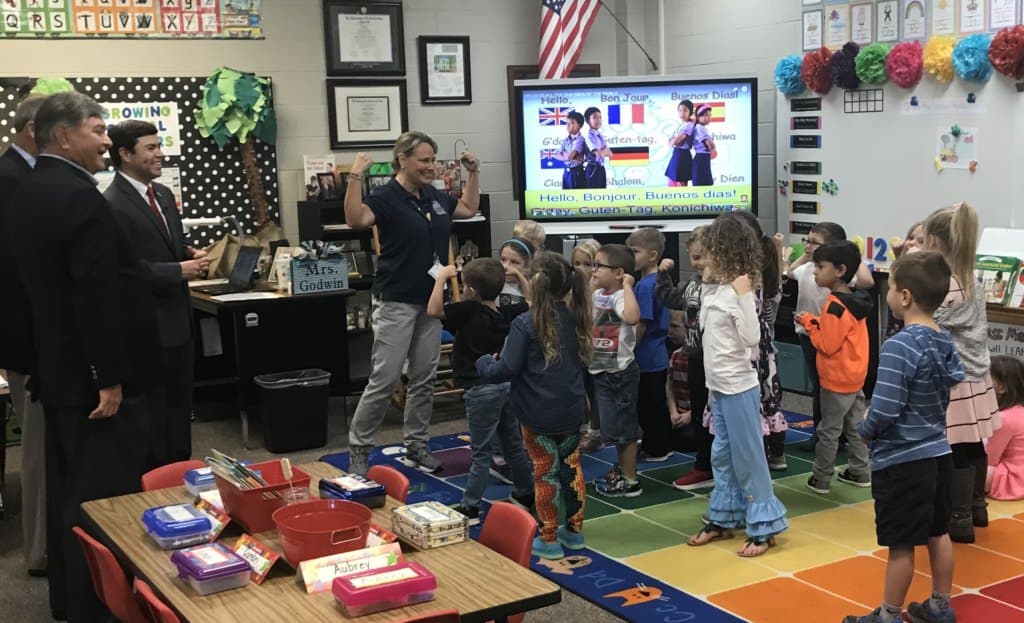

Lasting impact on children
Helping others is an effective way for children to process the fear and trauma of experiencing a storm and its aftermath. But psychologists say youth in flood- and storm-prone areas need careful watching, likening their experiences to those living in war zones — knowing the potential impact but never knowing when the next one will strike.
“Understanding how children and adolescents cope with trauma and the psychological stress associated with extended periods of feeling at-risk is critical to helping them manage their reactions,” according to the National Association of School Psychologists. “Threat-related stress can be caused by a variety of circumstances, such as personally experiencing a traumatic event, living in a neighborhood with frequent drive-by shootings, proximity to repeated acts of terrorism such as suicide bombings, living in a war zone, or experiencing reoccurring natural disasters such as flooding, wildfires or hurricanes.”
Their mental health, according to research, is a key indicator of the health and preparedness of entire communities. And returning them to a sense of normalcy has a deep impact on their education and their futures.
“From our perspective, children are really the bellwether of the recovery process,” said Beth Schrader, chief strategy officer of New Hanover County. “If our children aren’t doing well, then our community isn’t doing well.”
While schools are leveraging their resources to help communities, communities are tasked with banding together to help the kids, an essential function, Schrader says.
“Children don’t always have the tools to absorb what’s going on when you have a hurricane experience like we did,” she said. “It’s difficult for them to process all of these images. They don’t have a lot of personal control over their environments, and it’s really hard for them because they lose that sense of predictability and certainty and sense of routine.”
Schrader was involved with securing a grant for New Hanover County to address these issues, both in the wake of Florence and in advance of any future disaster. Taking a holistic approach to community disaster relief, she believes, starts by focusing on the children.
The grant for New Hanover County is part of the Resilient Children/Resilient Communities (RC/RC) initiative. A partnership between the National Center for Disaster Preparedness and Save the Children funded by a grant from GlaxoSmithKline, the RC/RC initiative is aimed at developing a model for child-focused disaster planning in communities.
“Many communities, systems and child-serving institutions are not sufficiently prepared to meet the needs of children when a crisis strikes. A community’s resilience and ability to rebound from a crisis can be measured by its ability to care for its children, who are one of the most vulnerable populations in an emergency. In the simplest terms, a chain is only as strong as its weakest link. We need to hone in and strengthen the ‘links’ that serve children, thereby enabling families and communities to reduce the lasting impact of disasters.” – National Center for Disaster Preparedness
“Very often, in recovery and in a disaster, we treat children as though they’re mini-adults — and they’re not,” Schrader said. “Their needs are unique, and some of the challenges they face are unique.”
For instance, when New Hanover’s community recovery resource center was open, they had therapy dogs and a child play center on site when people were applying for disaster food stamps.
“It allowed us to begin to help children who were there,” Schrader said. “While giving their parents a break to do what they needed to do, the children could be children. And really, we helped them pivot to what were the more positive aspects — ‘Do you remember when you were rescued?’ ‘Do you remember what it felt like when you felt safe?’ — versus reliving the disaster.”
New Hanover sees it as a way to transform their community. It’s part of a broader initiative where they are trying to approach recovery with an eye toward community progress, as well.
“The way we’re viewing recovery is: how can we use this as an opportunity to not only help restore us to where we were before, but take us further and make the community more resilient and even better,” Schrader said. “It’s tied very much to our strategic plan.”
